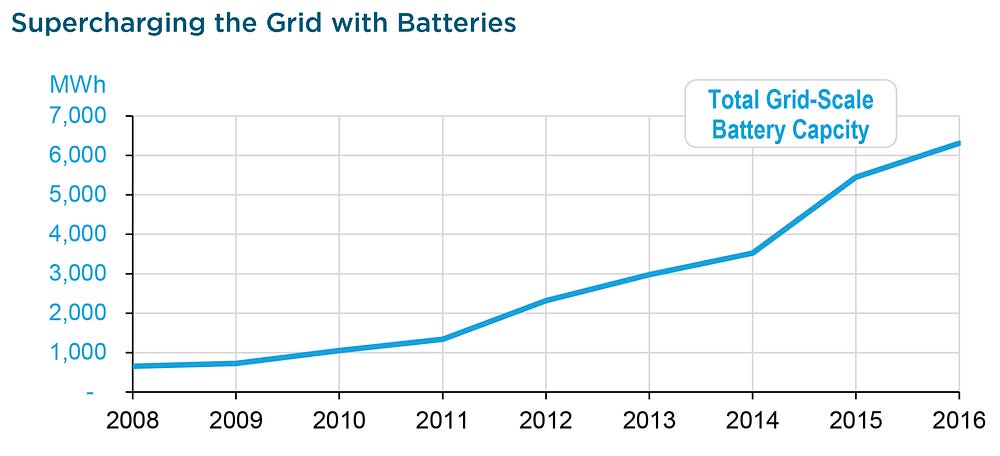Chart of the year: ‘Incredible’ price drops jumpstart clean energy revolution
New DOE report details latest advances in solar, wind, LED lights, batteries, and electric cars.
The U.S. Department of Energy (DOE) has released the 2016 update of its report, Revolution…Now: The Future Arrives for Five Clean Energy Technologies.
The must-read report reveals the game-changing progress core clean energy technologies have made over the last several years — specifically, solar, wind, LED lights, batteries, and electric cars. Accelerated deployment driven by smart government policies, both domestically and around the world, have created economies of scale and brought technologies down the learning curve faster than almost anyone expected.
“The clean energy revolution is too often always assumed to be something that would come along in 10 to 20 years,” Energy Secretary Earnest Moniz said Wednesday after the report’s release. “The message is: look around, it’s happening now.”
And these technologies have a very important synergy, as this chart shows:
Batteries are helping to enable the rapidly growing penetration of variable renewable sources like wind and solar (see my May piece, “Storing the sun’s energy just got a whole lot cheaper”). The DOE report notes that “the capacity of these grid-scale batteries has increased nearly 10-fold since 2008.”
Moreover, while “the lithium-ion battery packs used in the majority of grid-connected batteries” have declined more than 70 percent in the past decade, “analysts expect both utility and consumer scale batteries to decline in cost by another 20–27 percent in just the next two years.”
As a result, DOE projects “the total domestic energy storage market could be worth $2.9 billion by 2021, as compared to $350 million in 2015.” And that’s without considering the impact of emerging super-low-cost used (“second-life”) electric car batteries, which I discussed here.
DOE calls the soaring new battery storage market “Revolution Next,” which includes such transformational technologies as smart buildings, light-weight materials, and “Big Area Additive Manufacturing” (BAAM!), better known as 3-D printing.
The next time an opponent of climate action questions the cost-effectiveness and scalability of climate solutions — or the value of government clean energy policies — the top chart and indeed the whole report should be front and center in your response.




No comments :
Post a Comment
Note: only a member of this blog may post a comment.